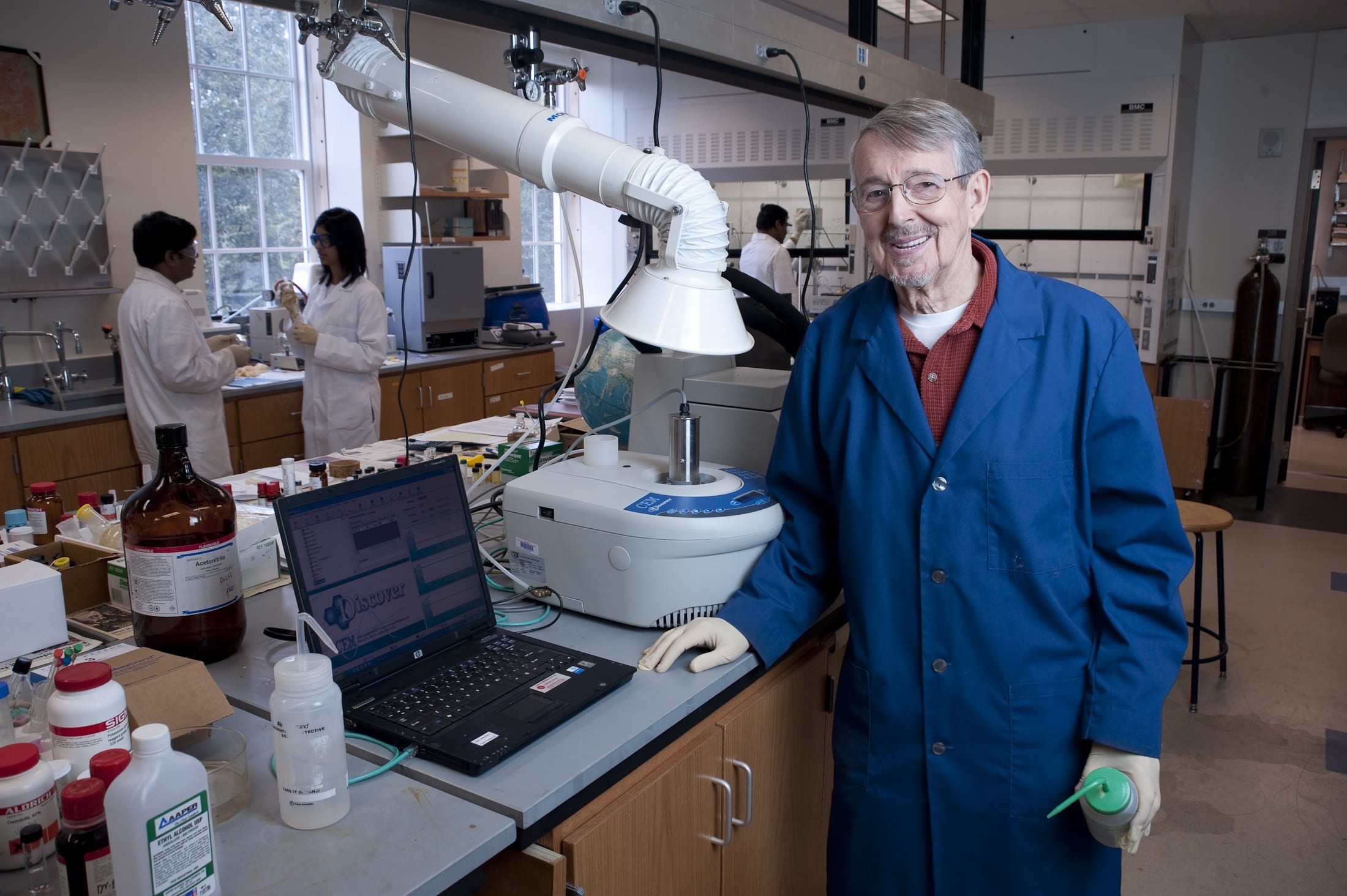Chemist Brent Sumerlin, assistant professor in the Dedman College Department of Chemistry at Southern Methodist University, is assessing the potential uses for nano-scale polymer particles. One of those could be controlled drug delivery.
In one scenario, polymers could detect high glucose levels in a diabetic’s blood stream and automatically release insulin, freeing diabetics from a daily injection schedule.

Sumerlin’s research has earned him a $475,000 National Science Foundation Faculty Early Career Development Award. NSF gives the award to junior faculty members who exemplify the role of teacher-scholars in American colleges and universities.
Sumerlin will receive the grant over five years for two related nanotechnology research projects. One of those projects has potential biomedical applications, and the other has a promising advanced materials application.
The prestigious award also includes support for education outreach. Sumerlin’s grant will fund a program for K-12 school districts and community colleges to help prepare and attract minority students for SMU chemistry internship positions.
“As a teacher, as a scientist, and through his community outreach and service, Professor Sumerlin exemplifies the finest scholarly tradition,” said Cordelia Candelaria, dean of Dedman College of Humanities and Sciences. “His work is dedicated to expanding minds through exposure to basic science, including a generous willingness to share his lessons and labs off campus with teachers and students in elementary, middle and high school classrooms. Dedman College is thrilled by NSF’s recognition of Brent’s achievements.”
Sumerlin, 32, works with an SMU team of postdoctoral research associates, graduate and undergraduate students who fuse the fields of polymer, organic and biochemistries to develop novel materials with composite properties.
“This award enhances what I do at the university level and what I can do through SMU for the rest of the community,” Sumerlin said.
The first part of Sumerlin’s NSF-funded research will investigate how nano-scale polymer particles can be triggered to come apart in response to a chemical stimulus. One of the potential applications of the technology is an automatic treatment solution for diabetics by releasing insulin from tiny polymer spheres when they encounter dangerous levels of glucose in the bloodstream.
“Researchers worldwide are looking toward methods of insulin delivery that will relieve diabetics of frequent blood-sugar monitoring and injections,” Sumerlin said.
The second aspect of the project involves making polymers with the ability to come apart and put themselves back together again – a technique that Sumerlin believes can be used to construct materials that are self-repairing.
“We could potentially think about coatings for airplane wings that are damaged by debris during flight,” Sumerlin said. “After landing, we could quickly treat the coating, causing it to re-form itself.”
Sumerlin received his doctorate from the University of Southern Mississippi in 2003, accepted a position as visiting assistant professor at Carnegie Mellon University for the next two years, then joined SMU in 2005.
Related links:
Brent Sumerlin’s research
Brent Sumerlin
SMU Profile: Brent Sumerlin
Sumerlin Research Group
Department of Chemistry
Dedman College of Humanities and Sciences


 The SMU team is working with renowned UTSW epidemiologist
The SMU team is working with renowned UTSW epidemiologist  Persian Gulf War veterans from across the country are being tested at UTSW using a type of brain imaging called functional Magnetic Resonance Imaging, or fMRI.
Persian Gulf War veterans from across the country are being tested at UTSW using a type of brain imaging called functional Magnetic Resonance Imaging, or fMRI. The SMU team’s primary challenge is in identifying differences in brain activation from locations deep within the brain using measured brain signals that are weak and vary from location to location.
The SMU team’s primary challenge is in identifying differences in brain activation from locations deep within the brain using measured brain signals that are weak and vary from location to location.
